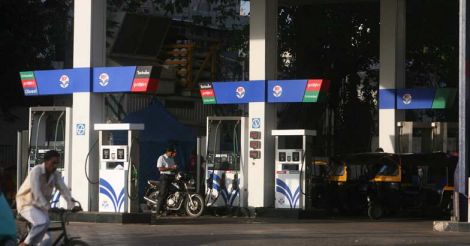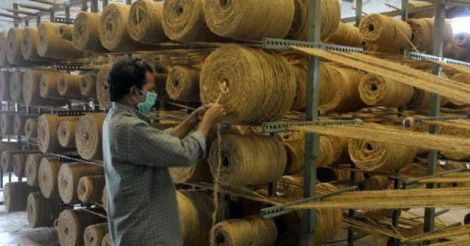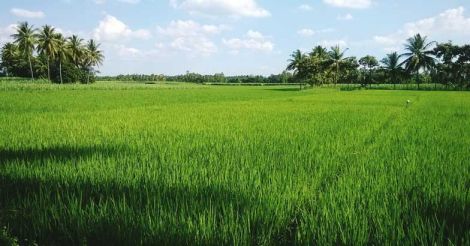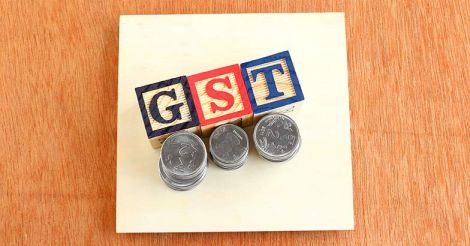The November 8 demonetization announcement was the peak of drama, but even more dramatic was what the country witnessed in its immediate aftermath of the unprecedented financial policy.
Piggy banks go bankrupt
One of the first casualties were piggy banks, lovingly hoarded by children.
Indians scrambled for small denomination, Rs 50 and Rs 100 notes, after demonetization rendered the Rs 500 and Rs 1000 notes into mere pieces of paper.

How fuel burned cash
As fuel stations accepted the demonetized notes in the initial days, people filled petrol for Rs 100 and paid with higher-denomination currency to get those exchanged.
But as pumps soon faced a shortage of cash, they insisted that customers buy fuel for the entire amount if they were paying with Rs 500 or Rs 1000 notes.
The chugging exchange house, luck and relationships
People who never travel in trains still booked tickets, as the railways were among the few utilities that would accept the junked notes.
Some used the old notes to buy lottery tickets, while vegetable vendors and restaurants offered credit to regular customers.

Kerala: a year since the experiment
It is one year since the country went through one of the most traumatic times in modern history.
Has the economy emerged from the demonetization-induced slowdown?
Most economists answer in the negative.
The impact of demonetization on Kerala was more than that on the national economy, said Dr B.A. Prakash, a former chairman of the State Finance Commission.
“It severely hurt the unorganized segment, agriculture, cooperatives and other sectors. It caused job losses and affected incomes. GST further worsened the situation. There is a fall in loan demand and repayment. Overcoming the slowdown isn’t easy,” he said.
According to estimates from the Accountant General, the state’s debt as of December, 2016, was Rs 1,74,294 crore. It had increased by Rs 16,924 crore from March that year.

A consumer economy and falling revenues
Demonetization further hiked the challenges for a state like Kerala that was dependent on borrowed money for day-to-day expenses.
The goods and services tax added to the trouble as revenue had fallen drastically since the introduction of the new indirect tax regime.
“The setback caused by the note-ban isn’t small. We could guard the co-operative sector by taking careful steps. But other sectors still face a slowdown,” said Thomas Isaac, the state finance minister.

Tax impact
Kerala had expected a 19% increase in sales tax collections during the period between 2016-17.
In December, a full month after demonetization, this revenue fell by 2%, but steeped up to 19% in the following month.
Revenue from property tax also fell during December-January.
Excise revenue, which was expected to be Rs 541 crore for the November-January period, fell short by Rs 101 crore, while proceeds from registration dropped by Rs 311 crore.
The state saw a 10% fall in vehicle registrations during the period.

The jolt to major industries
Sectors that are predominantly cash-based, such as small retail, restaurants and transport, contribute more than 40% to Kerala’s economy. The primary sector accounts for another 16%.
Demonetization had caused major disruptions to these sectors, which together contribute 56% to the state’s GDP.
Economist Mary George counts Kerala among the states that bore the brunt of demonetization.
“Kerala has many micro, small and medium enterprises. The note-ban had worsened the employment situation.
The construction sector had collapsed. But there had also been good developments such as the drop in land prices. It is early to say that the state has shrugged off the impact of demonetization,” she said.
One of the most active sectors in Kerala is construction. Demonetization has partially blocked the supply of foreign money into the sector.
Transactions in the real estate sector has slowed down drastically as tax authorities have increased scrutiny of cash deals.

These affected the business of small and medium builders and rendered their workers jobless. Laborers from outside the state were the most affected.
Many have returned to their home states as the sector has yet to return to pre-demonetization levels.
“There isn’t much work. Many laborers have returned to their native places, while others are looking for opportunities elsewhere,” said Sateeshan, who supplies laborers to construction sites in Thiruvananthapuram city.
In Perumbavoor, a hub for outstation laborers, the impact is quite stark. The plywood sector has collapsed, said local traders.
With the introduction GST on top of demonetization, business has shrunk by as much 40%, they complained. They now hope for a change in the GST structure for the business to bounce back.

Tourism struck by the lightening move
The tourism sector, one of the biggest revenue earners for the state, had taken a short-term hit.
Immediately after demonetization, arrival of domestic tourists had fallen by 17.7% and that of foreign travelers by 8.7%, compared to November, 2015. But the sector has mostly recovered since.

Dairy and fisheries
However, the dairy and fisheries industries are yet to recover fully. As many as 3,683 dairy cooperatives had been registered in the state as of March 2016.
Restrictions on cash withdrawals had hit their payments to farmers in the initial days.
In fisheries, a state planning board study had shown a 40% fall in consumers. But steps taken since by the state government have helped the segment cushion the impact.

Here comes GST
C.P. John, a former member of the planning board who was among the first to talk about the dangers of demonetization, called the GST a disaster worse than the note-ban.
“For the situation to become normal, everything has to return to the previous levels,” he said.
GST was introduced even as the economy was still under the impact of demonetization, said Isaac, the finance minister.
According to an expenditure committee report, GST is a setback for the state. It will have to share half the tax revenue with the center, he said.
“The center is trying to tackle the slowdown by increasing its spending. That is one way to do it. Kerala’s budget, too, will have steps to increase government spending,” he said.
Mary George also has similar views. The stimulus programs announced by the central government could help overcome the slowdown, she said.
Click to explore more exclusive news from Onmanorama's Demonetization Special

























 Indians scrambled for Rs 50 and Rs 100 notes, after demonetization rendered the Rs 500 and Rs 1000 notes into mere pieces of paper: Getty
Indians scrambled for Rs 50 and Rs 100 notes, after demonetization rendered the Rs 500 and Rs 1000 notes into mere pieces of paper: Getty